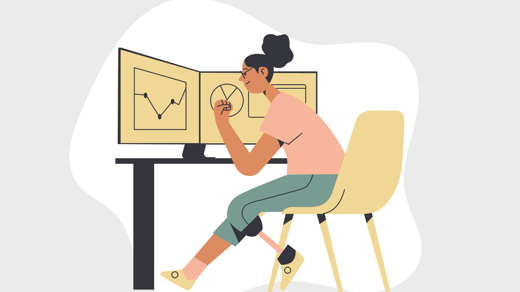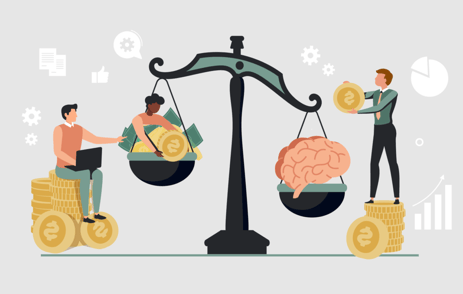It’s no secret that we are a visual society. Our eyes are drawn to graphics and visualizations that help us make meaning of a variety of complex situations. We might like to think we are able to quickly grasp, process, and utilize vast sets of data, but in the end, we all really appreciate an eye-catching image to help us make meaning out of random-seeming groups of information. Enter data visualization.
What is data visualization?
Like the millions of people in business and online, your association is gathering massive amounts of data every day (even if you don’t realize it!). Data visualization is a tool that takes that raw data and transforms it into a useful tool to help you better serve your members.
How?
- Data visualization is immediately engaging and captures attention
- Imagination is piqued and connections are made
- Visual representations allow leaders to interrogate the data in a way that leads to actionable outcomes
Each of these outcomes brings you closer to your organization’s mission and helps you measure your progress against the goals you have set.
Different types of data visualization
Data visualizations can be presented in a variety of forms, including:
- Charts
- Graphs
- Infographics
- Tables
- Maps
- Dashboards
How does data transform communities?
Which type of data visualization you use is less important than how you utilize it, and for what purpose.
John Foreman, CTO of Mailchimp, offers a clear example of a type of data visualization called a network graph that can be very useful for community building. He uses a list of characters who have been linked with each other on the TV sitcom Friends to determine who is most romantically active. Each connection they make is represented by a dot, and each dot is then linked to indicate how romantically connected each character is.
Similarly, a network graph helps you start thinking more clearly about the different communities within your organization.
Consider CareSet, the first organization in the U.S. with open access to data from Medicare doctors and their patients. This network takes public Medicare data and creates a network graph based on doctors in the Medicare network. This network graph clearly represents the following:
- Which doctors are referring patients to other doctors
- What procedures are being recommended
- Key doctors within a specialty
Doctors can use this data to broaden their networks and to see areas in which they might expand their referrals. This network graph also groups patients by disease and follows their outcomes, tracking which doctors prescribe care for best outcomes. This is a clear case for data-driven decision-making that can literally have a life-or-death outcome.
Data-driven community detection in your association
But how does data-driven community detection work when lives aren’t at stake? It highlights connections and related outcomes in a clear visual.
The process of transforming raw data into an actionable visualization can be very intimidating, but most associations can come up with a good visual in less than an hour.
There are three things to keep in mind when creating a data visualization to detect community behaviors.
1: Know what you’re looking for
Why are you diving into data-driven community building? Is there a specific issue you’d like to address, or are you simply trying to get a better idea of what your association members want?
2: Choose the right visualization
If you are looking for different sectors and communities in your association so that you can better tailor your products and offerings, which type of chart, graph, or plot might show that data to its best advantage?
A network graph easily demonstrates how your members are connected. Pie charts and bar graphs compare their engagement. Histograms show behavior over time.
You get the idea – match the visualization to the data for best results.
3: Mind your design
You want your representation to be clear and striking, not muddy and confusing. Use colors that clearly contrast each other to avoid confusion, and keep your design simple.
Bottom line? It’s all about community
Data visualizations offer valuable insights that we might otherwise miss. Your organization can use these charts and graphs to understand - based on people's behavior - what their motivating factors are and what interests they might share with others in the association or community. Each of these people might not know each other individually, but knowing how they behave helps better understand them as a group or a community of people with similar interests and needs.
When you understand the specific value each group is getting from their interactions with your organization, you can continue to advance your mission. This might mean beefing up outreach that matches the motivating factors within a group, or it might lead to new products or services tailored to each individual in one of those data sets.
Data visualization is here to stay, and it’s a tool you can use to develop community, further your mission, and add value to your members’ lives.

July 9, 2021


